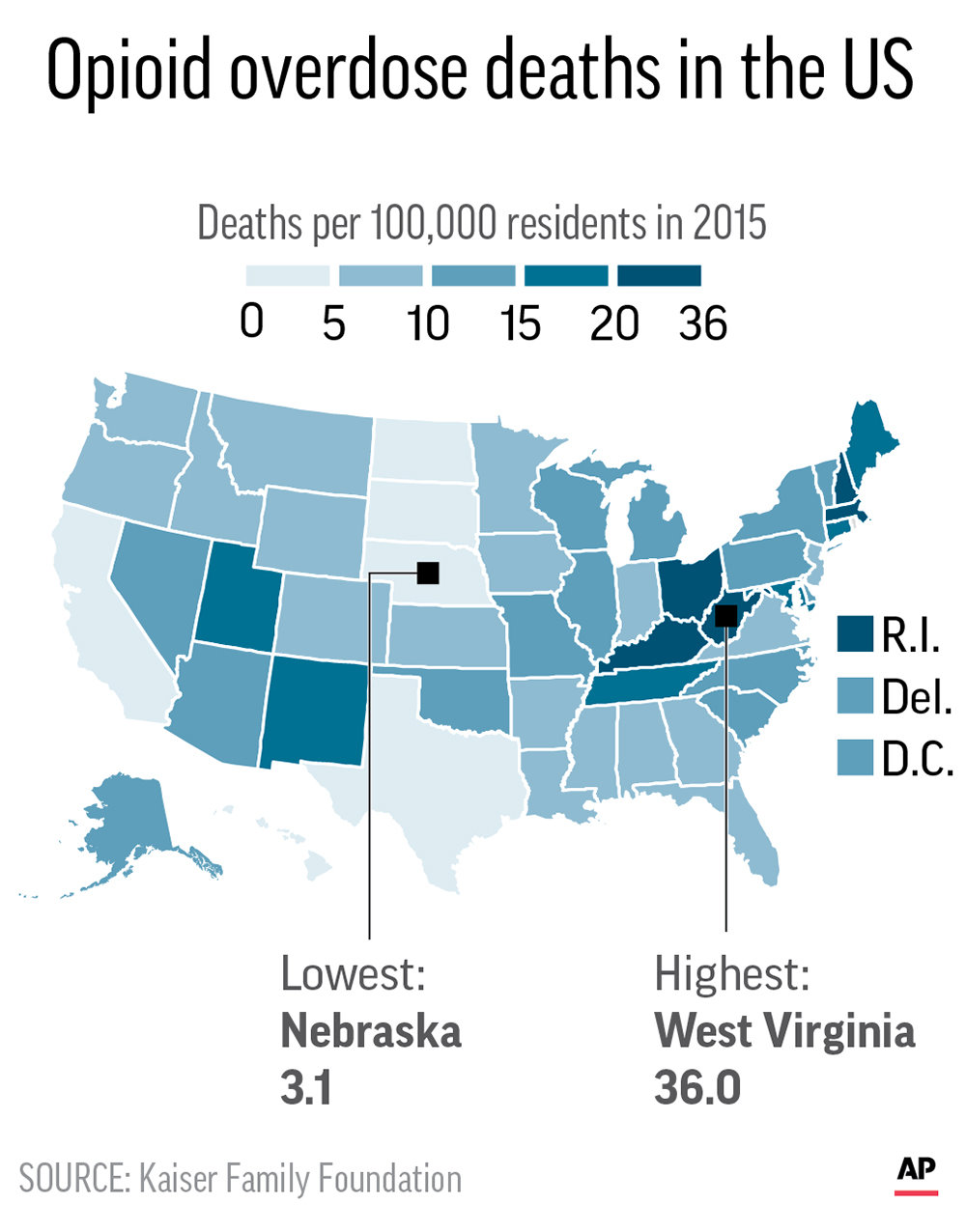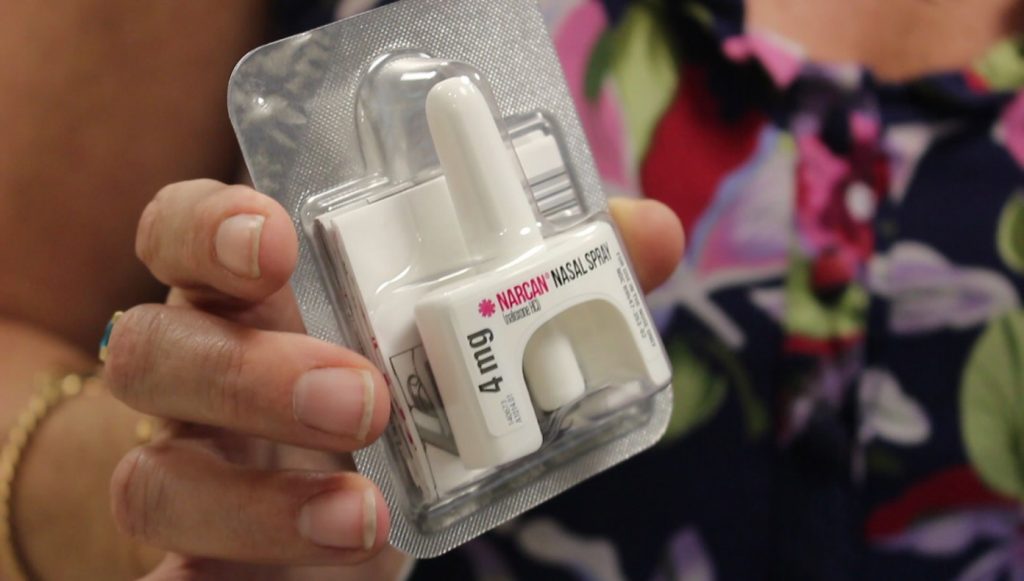ST. GEORGE – The opioid crisis was declared a national public health emergency Thursday by President Donald Trump.
While the declaration will not provide new dollars to fight a scourge that kills nearly 100 Americans a day, it will expand access to medical services in rural areas, among other changes.
From 2013-15, Utah ranked seventh in the nation for drug overdose-related deaths with 357 overall in 2015. Of those, 282 were related to opioid-based medications, according to the Utah Department of Health.

“In Utah, six people die each week from opioid abuse,” St. George Mayor Jon Pike said during a press conference held at Dixie Regional Medical Center earlier this month.
In the St. George area between 2014-15, local media reported that 33 people died from opioid overdoses, he said.
Read more: Dixie Regional plasters messages across hospital campus in campaign against opioid abuse
“This epidemic is a national health emergency,” Trump said in a speech at the White House, where he bemoaned a crisis he said had spared no segment of American society.
“As Americans we cannot allow this to continue,” he said.
Administration officials have made clear that the declaration, which lasts for 90 days and can be renewed, comes with no dedicated dollars. But they said it will allow them to use existing money to better fight the crisis.
Officials also said they would urge Congress, during end-of-the year budget negotiations, to add new cash to a public health emergency fund that Congress hasn’t replenished for years.
The Public Health Emergency Fund currently contains just $57,000, according to the Department of Health and Human Services. Officials would not disclose how much they were seeking.
U.S. Sen. Orrin Hatch, R-Utah, commended Trump’s emergency declaration in a statement Thursday.
I am sobered by the president’s action, but I hope this will provide the necessary resources and coordination to address the opioid epidemic that is sweeping our country. …
Although this crisis is affecting all states, it has been particularly devastating in my home state of Utah, where dozens of men and women die each month from overdose.
While Congress and state officials have made progress in stemming the tide of opioid addiction, much work remains to be done. It’s unfortunate that the situation requires such dire steps as a national public health emergency, but I’m hopeful that this will be a meaningful step to end this epidemic once and for all.
Even though a declaration has been made, critics say it won’t be enough.
“How can you say it’s an emergency if we’re not going to put a new nickel in it?” said Dr. Joseph Parks, medical director of the nonprofit National Council for Behavioral Health, which advocates for addiction-treatment providers.
Democratic House leader Nancy Pelosi also was critical, calling the new declaration “words without the money.”

Trump’s audience Thursday included parents who have lost children to drug overdoses, people who have struggled with addiction and first responders who have used overdose reversal drugs to save lives.
Read more: Washington City Police officers now carry overdose-reversing drug
Officials said the administration had considered a bolder emergency declaration under the Stafford Act, which is typically used for natural disasters like hurricanes. But they decided that measure was better suited to more short-term, location-specific crises than the opioid problem.
As a result of the public health emergency declaration, officials will be able to expand access to telemedicine services and substance abuse treatment for people living in rural and remote areas.
Officials will also be able to more easily deploy state and federal workers, secure Department of Labor grants for the unemployed and shift funding for HIV and AIDs programs to provide more substance-abuse treatment for people already eligible for those programs.
Trump also directed other departments and agencies to exercise their own available emergency authorities to address the crisis.
Drug overdoses of all kinds kill an estimated 142 Americans every day.
Closer to home

Push for medical marijuana
Due to the potential risk opioid-based medications can present, some individuals are looking to medical marijuana as an alternative.
In Utah, this has played a part in the push for the legalization of medical marijuana via a ballot initiative that is in the process of collecting signatures across the state. Should it garner the required 113,000-plus signatures, the question of legalization will be put before the voters in 2018.
Hatch has also joined the move toward medical marijuana legalization with the introduction of the “Marijuana Effective Drug Study Act of 2017,” or MEDS Act. The legislation is meant to streamline the research process surrounding medicinal cannabis and get it into the hands of patients more quickly.
Read more: Hatch: ‘It’s high time to address research into medical marijuana’
“… The federal government strains to enforce regulations that sometimes do more harm than good,” Hatch said when introducing the bill Sept. 13. “To be blunt, we need to remove the administrative barriers preventing legitimate research into medical marijuana, which is why I’ve decided to roll out the MEDS Act.”
Cutting back on the prescriptions
Closer to home, Dixie Regional Medical Center has plastered messages warning about opioid abuse and related statistics on parts of its hallways, elevators, tabletops and floors in an effort to spread awareness.
Intermountain Healthcare has also pledged to reduce the amount of opioid-based pills it prescribes to patients by 40 percent by the end of 2018.
Steven Van Norman, Intermountain Healthcare’s Southwest regional chief medical director, said a survey found that Intermountain Healthcare clinicians fill prescriptions for an estimated 19 million opioid-based pills annually. Only around half of those pills are used, he said.
Overdose reversal agent
In recent years, the opioid overdose-reversing drug naloxone, also known as Narcan, has been adopted by emergency responders and police agencies across the state. The drug, in the form of a nasal spray or injection, has saved nearly 2,000 lives in Utah, according to the group Utah Naloxone.

Under Utah law, any individual in the state may obtain, carry, furnish and administer naloxone to anyone at risk of overdosing themselves or to anyone at risk of witnessing an overdose around them.
“Naloxone rescue kits across the state of Utah, in the hands of nonmedical laypeople, have been responsible for over 1,800 lives saved,” said Jennifer Plumb, medical director of Utah Naloxone. “Carrying naloxone is an important and responsible strategy for anyone who knows individuals who may be at risk of an opiate overdose.”
Amid reports that naloxone rescue kits were being confiscated from non-emergency personnel, Utah Attorney General Sean Reyes said in a statement Thursday that the state reaffirms the right of an individual to carry them in order to save lives.
“Anyone in possession of a naloxone kit has the ability to keep a victim alive until they can receive emergency medical aid,” Reyes said. “The taking or confiscating of these rescue kits is rarely an appropriate action and could potentially result in a life lost.”
JILL COLVIN and CARLA K. JOHNSON of the Associated Press contributed to this article.
Email: [email protected]
Twitter: @MoriKessler
Copyright St. George News, SaintGeorgeUtah.com LLC, 2017, all rights reserved.
Just don’t start doing drugs recreational, and then you won’t have a problem! BAM! Problem solved!
The vast majority (IMO) of those that end up addicted to opioids are normal people that start taking them for legitimate reasons (chronic pain due to back injury, degradation, etc), but the amounts increase due to need (early addiction) and overly willing doctors. Medicaid patients are 6 times more likely to die of an overdose from opioids, because the doctors can prescribe at will with no checks and balances from insurance companies or self-pay economic constraints. This IS an epidemic and it has largely been created by government policy and individual / corporate greed.
The solution, as always, is personal responsibility (which in this case comes in the form of doing the necessary exercises and therapy, and seeking natural alternatives for managing pain).
” government policy” has nothing to do with this so-called crisis. It is completely the result of greedy drug makers encouraging greedy doctors to over prescribe their drugs in return for generous kickbacks. This is an excellent example of where the free market fails the consumer. Otherwise, I agree with you that most of these addicts begin their use of the drugs for legitimate medical conditions.